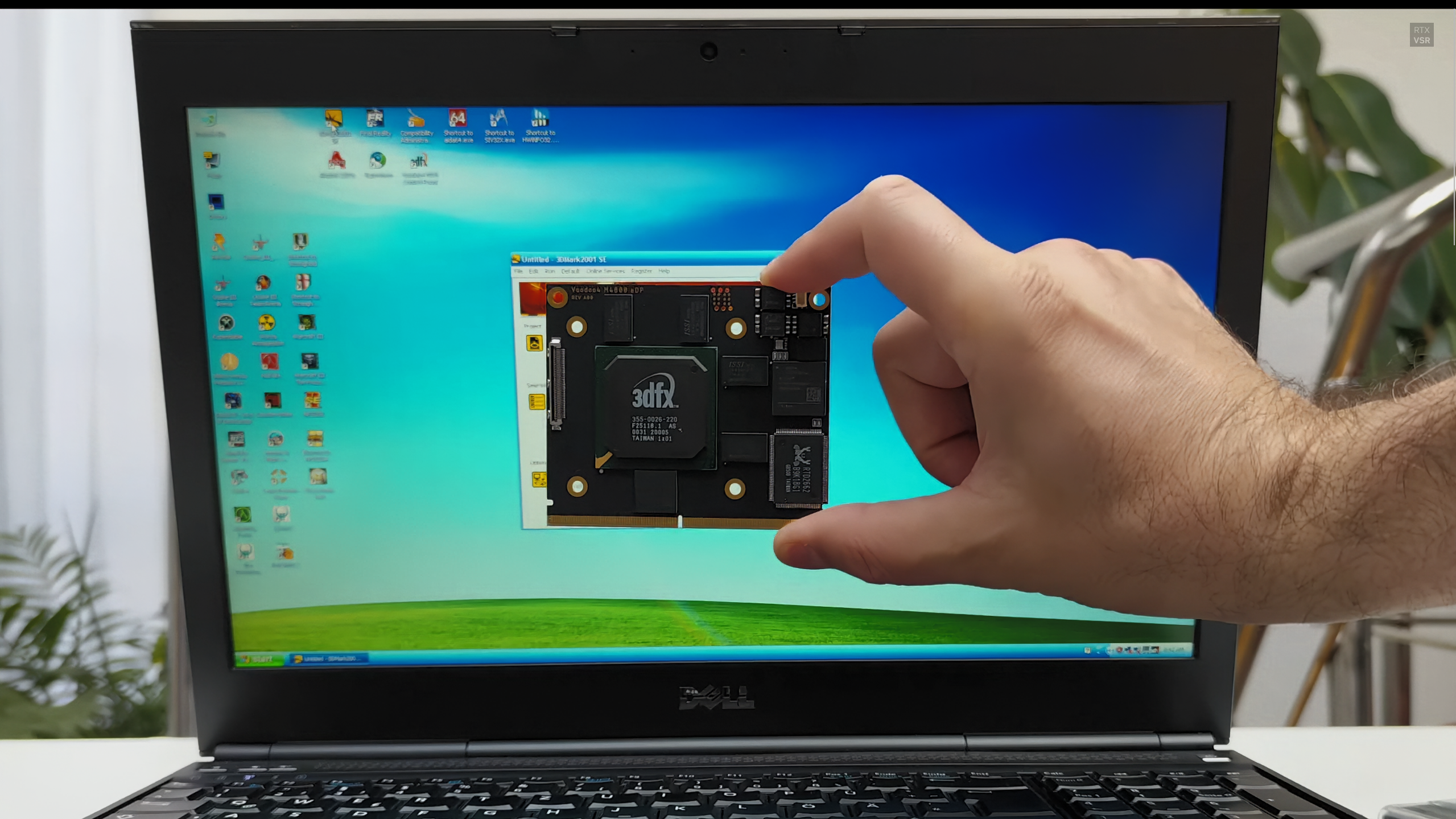Legendary Voodoo4 GPU modded into laptop, benchmarks work with Windows XP
A blast from the past.

For over a year, hardware enthusiast Daniel Simionescu (sdz) has been hard at work porting 3dfx's (now-defunct) Voodoo graphics to the mobile form factor. Now, the fruits of their efforts have materialized in the form of several designs, with one including a Voodoo4 GPU integrated into a Dell Precision M4800 laptop using a custom-designed MXM (Mobile PCI Express Module) card. YouTuber Omores got their hands on this exact setup and decided to take it for a spin in Windows 98 and XP. They encountered several compatibility issues, but eventually got the GPU up and running, at least partially.

Voodoo was all the hype in the late 90s, being among the first affordable and widely adopted 3D accelerators for the mainstream. As we mark the 25th anniversary of Nvidia's takeover of 3dfx, Voodoo accelerators are now mostly remembered for nostalgia. At the Vogons forums, dedicated modder sdz developed a PCB equipped with a Voodoo4 GPU, specifically the VSA-100 core paired with 64MB of SDR memory, mirroring the never-released Voodoo4 4800.
Bridging the gap between the VSA-100 and modern standards required the integration of an FPGA, an LVDS/eDP connector, and a RealTek Scaler on the carrier board. YouTuber Omores decided to put this design to the test with the Voodoo4 board connected to a Dell Precision M4800, chosen for its Haswell-based CPU and, crucially, its MXM slot.
Testing in Windows 98 yielded no significant results, as the BIOS flat-out refuses to use Voodoo4 as the primary GPU during boot-up. Likewise, the Voodoo4's BIOS isn't MXM-compliant, and the laptop's BIOS uses a whitelist, only allowing use with authorized cards. As a workaround, the YouTuber had to switch to generic VBE (VESA BIOS Extensions) drivers, which offer higher display resolutions and a basic display output with little to no hardware acceleration. The video goes over several VBE drivers, including VBESVGA, VB9X, and Scitech Display Doctor, each with its own set of limitations and quirks.
That being said, Windows XP cooperated slightly better, and the YouTuber was able to fire up the 3DMark 2001 benchmark and Need for Speed: Porsche Unleashed, without any major hiccups. Running games built using 3dfx's proprietary Glide API on this system might require using wrappers. Regardless, there isn't a definitive list of supported games, but we're sure the community might compile one soon enough. The original developer doesn't have any intention to commercialize this design, but instead plans to make it open-source.
Get Tom's Hardware's best news and in-depth reviews, straight to your inbox.

Hassam Nasir is a die-hard hardware enthusiast with years of experience as a tech editor and writer, focusing on detailed CPU comparisons and general hardware news. When he’s not working, you’ll find him bending tubes for his ever-evolving custom water-loop gaming rig or benchmarking the latest CPUs and GPUs just for fun.
-
Sluggotg I loved my Voodoo cards. I bought a Voodoo 1 when they came out. I decided to overclock it so I crudely attached heatsinks on the card and gave it a shot. Stock is 50mhz and you can go all the way to 63mhz. I set it at 63 and left it there, zero issues. When the Voodoo2 came out, it's stock speed was 100mhz. I tried 110mhz.. no dice.. all the way down to 103mhz and it was stable. I just set it back to 100. Same thing with the second one I bought for my SLI setup. Seeing my games running on the Voodoo1 was one of those rare times when I was blown away, (like when I first saw an Amiga in action). It was sad they went under.Reply -
Krieger-San Reply
Especially considering they're playing with a system that has a hardware whitelist. This is pretty much a nail in the coffin of a project unless you know how to modify BIOS code. Not impossible, but it's not easy and has super high risk of hardware damage.palladin9479 said:Now that is some dedication to retro.